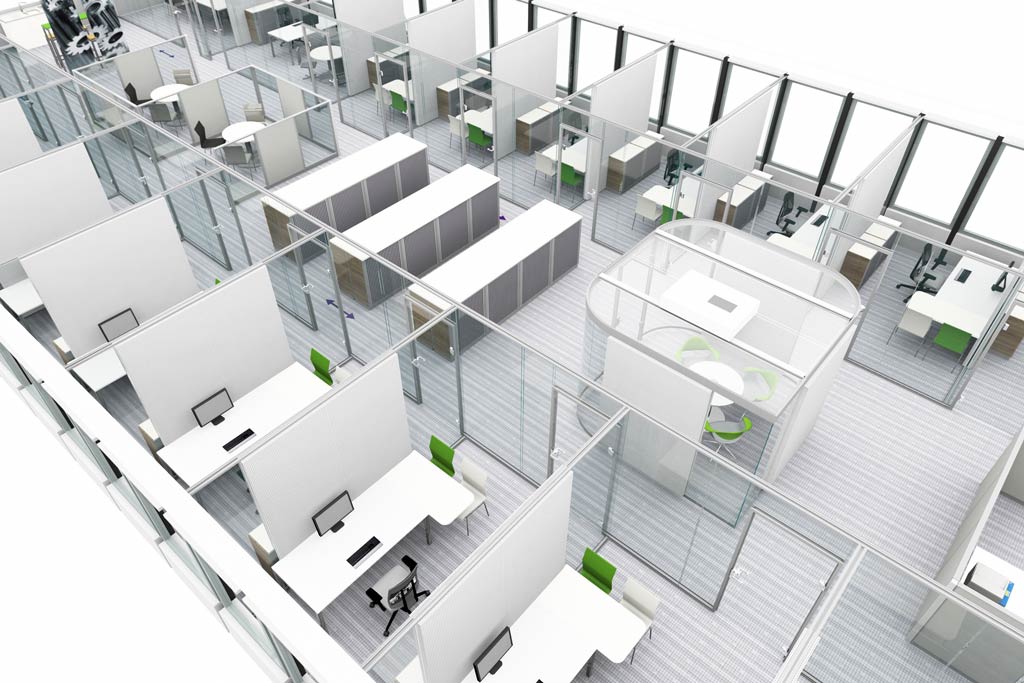
Combined office
The combination office consists of standardized and small single rooms that are lined up along the facade around a combination zone. It was created in Scandinavia in the mid-80s and also achieved popularity in Germany, largely through Congena. The dispute that was intensifying at this time between advocates of the large area and supporters of the cell office literally cried out for a compromise, an optimum from both worlds.
Small individual rooms around the combination zone
In a group, if necessary, and alone if necessary. According to this motto, small but optimally furnished individual rooms were created, lined up on the facade around the spacious combination zone. The office fronts are glazed as much as possible, flooding them with daylight. The combination zone opens up the offices and offers areas for working in groups, for ad hoc communication, for the archive, office technology and, for example. B. the work café. The combination zone is not only included in the action, but rather forms the public core of the area, similar to a market square in a village or city. Today the combination zone developed here is used for almost all planning variants. Each office has a lockable door. Concentrated work is possible, while the glass walls promote transparency and proximity. At the same time, the combination zone with its facilities is available to and encourages teamwork. Thanks to standardization, the single rooms offer individuality and yet are flexible. Moves can be carried out without moving any furniture. The combination office is the most uneconomical office concept, especially in terms of population density. The basic investment is similar to the land consumption.
Current open office worlds simply turn the combined office principle
It seems as if the combined office no longer plays a significant role today. Although the advantages speak very much in favor of this type of office space, high investments and costs stand in contrast. In modern, open office environments, the principle is simply turned around. In the combination zone there are closed communication rooms and the office space remains open.

